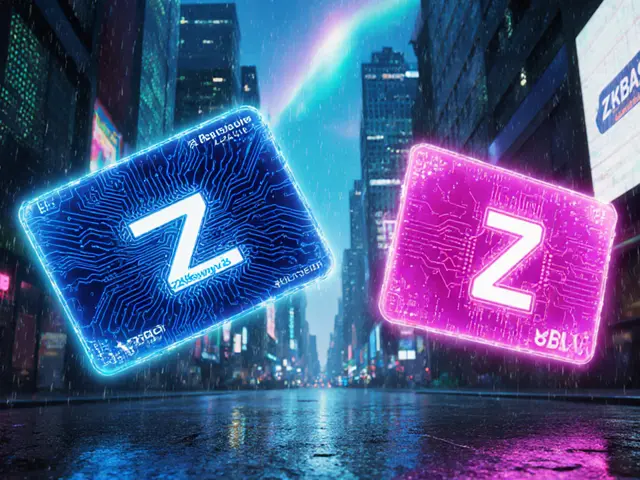
Metaverse Token Guide and Resources
When working with Metaverse Token, a blockchain‑based asset that powers virtual worlds, from land parcels to in‑game items. Also known as virtual world token, it lets users buy, sell, and earn inside digital universes. A core building block is the NFT, non‑fungible token that represents a unique item or piece of land, which gives each avatar skin or plot of land a distinct identity. To keep transactions cheap and fast, many projects rely on Layer‑2 scaling, solutions like zk‑rollups that batch many moves onto Ethereum. Finally, a popular way to kick‑start a new token is through an airdrop, free distribution to early supporters to spark network effects.
Why do you need a Metaverse Token? First, it acts as the native currency for buying virtual land, avatars, and services. Second, it often doubles as a governance tool, letting holders vote on world upgrades, zoning changes, or fee structures. Projects like Immutable X (IMX) show how a token can back a zk‑rollup that handles millions of NFT trades per second, making virtual marketplaces feel as smooth as a real‑world storefront. When you pair that with a solid tokenomics model—limited supply, staking rewards, and burn mechanisms—the token becomes both a utility and an investment.
Key Concepts Behind Metaverse Tokens
Beyond the token itself, identity matters. Self‑sovereign identity (SSI) platforms let users prove ownership of avatars or land without handing over personal data. Think of it as a digital passport stored on‑chain; it boosts trust in virtual marketplaces and reduces fraud. The SSI approach is highlighted in our guide on self‑sovereign identity, which explains how decentralized identifiers (DIDs) and verifiable credentials lock your virtual assets to a real person, not a shady bot.
Gaming is another engine driving demand. DeFi Kingdoms blends a play‑to‑earn RPG with a crypto exchange, using its JEWEL token to buy heroes, upgrade farms, and trade on a decentralized market. The same principle applies to other metaverse games: a token fuels in‑game economies, while NFTs represent each character or item. The Immutable X (IMX) deep dive in our library explains why a layer‑2 rollup is essential for scaling these high‑frequency trades without burning through gas fees.
Regulation can’t be ignored. Countries like Australia and Singapore are drafting rules that affect how virtual assets are classified, taxed, and licensed. Our Australia consumer‑protection article breaks down the 2025 reforms that require exchanges to verify token listings, which directly impacts how metaverse tokens are listed and traded. Meanwhile, Singapore’s licensing framework sets clear AML standards that any project launching a token sale must follow.
Airdrops remain a common launch tactic. The Creator Platform (CTR) airdrop guide walks you through eligibility, safety tips, and claim steps—exactly the kind of information you need before you trust a free token drop. Similarly, the CRDT and ZKSwap airdrop posts show how smart contract interactions can automatically distribute tokens to early users, boosting network adoption quickly.
When you consider buying or holding a metaverse token, you also need a reliable exchange. Our CookSwap review explains what to look for when a new DEX promises low fees and fast swaps, while the Fastex review compares fees, security, and unique token incentives. Knowing which platforms support your favorite token helps you avoid costly mistakes.
Tokenomics often include staking or liquidity mining. The Immutable X guide highlights how staking IMX earns you a share of protocol fees, while the DeFi Kingdoms review shows how JEWEL can be locked to earn yields and bonus game items. These incentives align user interests with network health, creating a virtuous loop where more activity fuels higher token value.
Finally, keep an eye on emerging trends like zero‑threshold Travel Rule compliance in the EU, which affects how tokens move across borders. Our EU Travel Rule guide explains the steps platforms must take to stay compliant, ensuring that your metaverse token can travel globally without hitting legal roadblocks.
All of these pieces—NFTs, layer‑2 tech, identity, regulation, airdrops, and exchange choices—come together to shape the future of virtual worlds. Below you’ll find a hand‑picked collection of articles that dive deeper into each area, giving you practical advice, technical insights, and up‑to‑date news. Explore the guides, compare the tokens, and get ready to navigate the metaverse with confidence.




